 July 20, 2023 John E. Ross, KD8IDJ, Editor
| ||||||
Slow-Scan TV Experiment with ARRL Planned for Amateur Radio on the International Space Station Amateur Radio on the International Space Starion (ARISS), in collaboration with ARRL, plans to carry out a special slow-scan TV (SSTV) experiment from the ISS on Wednesday, July 26, 2023. During the event, the Columbus Module Repeater, transmitting at 437.800 MHz, will carry a message to be received by teachers attending the ARRL Teachers Institute on Wireless Technology professional development class.
The pass will be over the Mid-Atlantic and New England area, with transmissions scheduled to begin at 20:05 UTC (16:05 ET) and end at 20:20 UTC (16:20 ET). If necessary, a backup window is scheduled from 21:40 UTC (17:40 ET) to 21:55 UTC (17:55 ET). Radio enthusiasts are welcome to download the message and follow along with the event, but it is asked that all hams refrain from using the repeater for voice contacts during the event. This is a special experiment conducted through ARISS and ARRL. After the experiment has concluded, normal operations of the repeater should resume in voice mode only.
The primary goal of the ARISS program is to promote exploration of science, technology, engineering, the arts, and mathematics topics (STEM/STEAM). ARISS does this by organizing scheduled contacts via amateur radio between crew members aboard the ISS and students. The next scheduled ARISS contact is with scouts at Camp William B. Snyder in Prince William County, Virginia. The contact is scheduled for Friday, July 21, 2023 at 1754 UTC (13:54 EDT). Scouts will ask their questions of Astronaut Sultan Al Neyadi, amateur radio call sign KI5VTV, who will use the ARISS radio station on the ISS to talk. The downlink frequency for this contact is 145.800 MHz and may be heard by listeners within the ISS footprint. ARISS is a cooperative venture of international amateur radio societies and the space agencies that support the ISS. In the US, participating organizations include NASA's Space Communications and Navigation program (SCaN), the ISS National Laboratory -- Space Station Explorers, ARRL, and AMSAT. ARRL Laboratory Study of HF Petition Ongoing, Filed Comments to Follow
ARRL has heard from many members and other licensed radio amateurs who share interest and concern about this petition. Read more about our efforts here. Summits on the Air 2023: North America Summits on the Air (SOTA) in North America has three events scheduled between August 4 - 7, 2023. The Colorado 14er annual event will run from August 4 - 7, the SoCal SOTAFest in Southern California will run from August 4 - 6, and the Pacific Northwest Not-Quite-Fourteener event will run from August 5 - 6, and includes climbers in Washington and Oregon.
Many different frequencies and modes will be used during the August events, but the recommended 2-meter FM frequencies have been changed to 146.58, 146.55, and 146.49 MHz to align with the use of the North America Adventure Frequency for SOTA (146.58 MHz). Operation is also permitted on select HF frequencies. The National Simplex Frequency (146.52 MHz) may also be used. Each event website provides a list of operating frequencies. All amateur radio operators and shortwave listeners are invited to participate. Read more about SOTA at their website. A HABGab and StratoScience Balloon Launch Is Scheduled for July 22, 2023 HABGab 2023 is a special STEM event for the ham radio community in the New England area and it is in partnership with the New England Weather Balloon Society and the Sci-Tech Amateur Radio Society. It features the launch of a high-altitude balloon equipped with three payloads, including amateur radio transmitters, a video transmitter, and science and engineering projects by students from the StratoScience Lab at New England Sci-Tech and the Benjamin Franklin Classical Charter Public School. The StratoScience Lab is a class taught by Max Kendall, W0MXX, and Seth Kendall, KC1PZY. The balloon weighs 2000g and the payload 4000g. A cross-band UHF/VHF repeater will allow for a 2 - 3-hour one-time event for hams around New England. All amateur radio operators are invited to contact the repeater during the balloon's flight. The balloon will also be transmitting live video on 1.2 GHz, and live streaming to YouTube from the ground station at New England Sci-Tech. Using the call sign W1U, the balloon's real-time position will be available at https://amateur.sondehub.org, and the cross-band repeater frequencies are as follows: Uplink: 146.55 MHz The call signs for all of the payloads are as follows: W1U - Main payload (transmitted by repurposed RS-41 radiosonde). Also on board will be a U4B pico tracker that is being evaluated by Eric Johnson, KC1OAV, in preparation for a circumnavigation flight to happen at a later date. This can be tracked separately at http://qrp-labs.com/tracking.html, under the name NESciTech1. In the event of bad weather July 23, 2023, is the alternate date for the launch. ARRL CEO interviewed on "W1DED in Maine" ARRL CEO David Minster, NA2AA, was interviewed on the "W1DED in Maine" YouTube channel. In the nearly hour-long chat with host Kevin Thomas, Minster shared quite a bit about things going on at ARRL. He talked about the culture within the organization, the impact social media has on amateur radio, and how he approaches listening to members. The pair also covered the results of the recent ARRL dues survey. The "W1DED in Maine" YouTube channel is dedicated to the core principle of asking for advice, perspective, and inspiration from experienced amateur radio operators around the world. The concept of sharing experiences is fundamental to ham radio, and through this channel, viewers can connect with experts in their particular niche, gain knowledge from their point of view, and seek help with issues that can't always be solved through trial and error or found in a book. The channel started when Thomas was trying to get back into the hobby. "I did what hams have been doing forever -- I reached out to other hams to ask questions. I then realized I should be recording the conversations because the perspective might be useful," said Thomas. Click here to view the video: https://youtu.be/f-ltELsO9gE Amateur Radio in the News ARRL Public Information Officers, Coordinators, and many other member-volunteers help keep amateur radio and ARRL in the news. "Amateur radio operators in Butts County put their skills to test during annual Ham Radio Field Day" /Jackson Progress - Argus (Georgia) July 17, 2023 -- The Amateur Radio Club of Butts County. "Bathtub society salutes Nanaimo Amateur Radio Association" / Nanaino News Bulletin (British Columbia) July 20, 2023 -- The Nanaimo Amateur Radio Association. ARRL Podcasts On the Air Passing traffic is a ham radio activity that's nearly as old as ham radio itself, and getting accurate messages to their destination in a timely manner takes training and skill. In addition to participating in nets, hams also have the opportunity to take on ARRL Field Organization positions that are responsible for traffic. In this episode, "When Messages Matter: Passing Traffic," we talk to Ethan Hansen, KC1OIP, who fulfills one such position, Official Relay Station, in ARRL's National Traffic System. Listen in to learn about what it takes to become an Official Relay Station, how the position makes a difference in the community, and how it benefits your amateur radio skills and experience. ARRL Audio News The On the Air podcast is available on iTunes (iOS) and Stitcher (Android). The On the Air podcast and ARRL Audio News are also on blubrry -- On the Air | ARRL Audio News. Announcements The International Amateur Radio Union (IARU) Region 1 Youth Working Group and the Hungarian Radio Amateur Society (MRASZ) are asking amateur radio operators to take part in the second round of this year's YOTA Contest on Saturday, July 22, 2023, from 1000 - 2159 UTC. There will be opportunities to make contacts with young operators from around the world, or you can join the contest just to support amateur radio youth and help them enjoy the hobby. If you have children, grandchildren, or friends under the age of 25 who might be interested in amateur radio, a YOTA contest is the best way to get them operating. The contest rules, available in 12 languages, are listed at https://www.ham-yota.com/contest. The previous year's results and the latest award ceremony recording can be viewed on the site as well. The contest will track the youngest and oldest competitors. For those who are not regular contestants, a web-based log-keeping program has been created and is similar to a paper log. With this, anyone can send a log to the contest. The program can be found on https://contest.ham-yota.com/, under the name Online logger. Don't forget to read the user manual and have your equipment ready. A Post ARRL Field Day reminder: Entries Due. The deadline for 2023 Field Day entries is 2059 UTC Tuesday July, 25. As of Thursday July 20, 4056 entries have been received. Participants are reminded to check the status of their entries at https://field-day.arrl.org/fdentriesrcvd.php to ensure that they are complete. If the status in "pending documents," one of the required supporting documents still needs to be submitted. ARRL staff is working on entering paper Field Day entries that have been sent to HQ, once those are completed, they will appear on the Entries Received page. National Sunflower Day is August 15, 2023, and the ARRL Kansas Section will be hosting a Sunflower Net. The Sunflower Linked System is a multimode linked system in Kansas and the special event call sign will be W0S. Stations are encouraged to check into the Sunflower Net by using one of the connectors listed at www.sunflowernet.us. Those connections are available on Allstar, Hamshack Hotline, EchoLink, digital mobile radio (DMR), Digital Smart Technology for Amateur Radio (D-STAR), System Fusion, Project 25 (P25), or open-source amateur radio M17. Lloyd Colston, KC5FM, one of the event managers, said the sunflower is the state flower of Kansas, and more information about its observance and history is available at the National Sunflower Day web page or at State Symbols USA. In Brief... Amateur radio operators are needed for a real-world science experiment during upcoming solar eclipse events. Members of the Ham Radio Science Citizen Investigation (HamSCI) will be making radio contacts during the 2023 and 2024 North American eclipses and probing the Earth's ionosphere. The Solar Eclipse QSO Parties (SEQPs) are set to be fun and friendly with a competitive element, and all amateur radio operators and shortwave listeners are invited to participate. The upcoming eclipses (October 14, 2023, and April 8, 2024) provide unique opportunities to study interactions between the sun and the ionosphere. As participants and HamSCI members transmit, receive, and record signals across the radio spectrum during both eclipse events, valuable data will be created to test computer models of the ionosphere. Learn more at https://hamsci.org/projects. ARRL is a partner with HamSCI for the SEQP. The K7RA Solar Update Tad Cook, K7RA, of Seattle, Washington, reports for this week's ARRL Propagation Bulletin, ARLP029:
Average daily sunspot numbers declined, but the average daily solar flux increased. Sunspot averages were 181.9 last week and 130.6 this week. The average daily solar flux increased from 179.4 to 190.5. Two new sunspot groups emerged on July 14, as well as three more on July 17, and another two on July 19. The average daily planetary and middle latitude A indices were both 12.9 this week, rising from 8.6 and 8.1. Predicted solar flux is 188 on July 20 - 23; 186, 184, 186, and 160 on July 24 - 27; 165 on July 28 - 29; 170 on July 30 - 31; 165 on August 1 - 4; 170, 175, 175, and 170 on August 5 - 8; 165 on August 9 - 11; 170 on August 12; 175 on August 13 - 14, and 170 on August 15 - 19. The predicted planetary A index is 28, 20, and 12 on July 20 - 22; 5 on July 23 through August 2; 10 and 8 on August 3 - 4; 5 on August 5 - 14, then 12, 8, and 8 on August 15 - 17. CNN presented a smart piece on the sunspot cycle peaking sooner than expected: Cosmos published an article about a double-peaked solar flare: Sunspot numbers for July 13 - 19, 2023, were 146, 141, 96, 99, 149, 142, and 141, with a mean of 130.6. The 10.7-centimeter flux was 202.9, 180.6, 178.5, 184.3, 180, 218.5, and 188.9, with a mean of 190.5. Estimated planetary A indices were 7, 20, 8, 10, 24, 16, and 5, with a mean of 12.9. Middle latitude A index was 9, 17, 9, 13, 19, 16, and 7, with a mean of 12.9. A comprehensive K7RA Solar Update is posted Fridays on the ARRL website. For more information concerning radio propagation, visit the ARRL Technical Information Service, read "What the Numbers Mean...," and check out the Propagation Page of Carl Luetzelschwab, K9LA. A propagation bulletin archive is available. For customizable propagation charts, visit the VOACAP Online for Ham Radio website. Share your reports and observations. A weekly, full report is posted on ARRL News. Just Ahead in Radiosport
Yearlong -- ARRL Volunteers On the Air (VOTA). See the State Activations Schedule for weekly W1AW Portable Operations, including:
Upcoming Contests:
Visit the ARRL Contest Calendar for more events and information. Upcoming Section, State, and Division Conventions
Search the ARRL Hamfest and Convention Database to find events in your area. Getting it Right... In the July 13, 2023, issue of the ARRL Letter, there was a paragraph in the "In Brief " section that erroneously stated Bouvet Island is off the coast of Norway. Bouvet Island is, of course, off the coast of Antarctica. It is a dependency of Norway and is currently ranked 11th on the ClubLog DXCC Most Wanted List. Have News for ARRL? Submissions for the ARRL Letter and ARRL News can be sent to news@arrl.org. -- John E. Ross, KD8IDJ, ARRL News Editor
ARRL -- Your One-Stop Resource for
Subscribe to...
Free of charge to ARRL members...
| ||||||
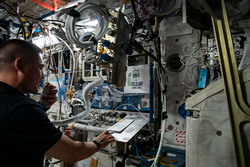
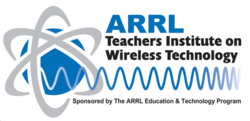 The ARRL Teachers Institute on Wireless Technology is a donor-funded professional development program designed to help classroom teachers elevate their STEM programs through the use of wireless technology. As a part of the ARRL
The ARRL Teachers Institute on Wireless Technology is a donor-funded professional development program designed to help classroom teachers elevate their STEM programs through the use of wireless technology. As a part of the ARRL 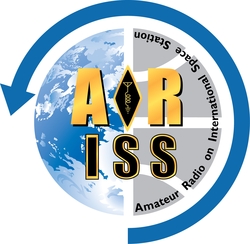
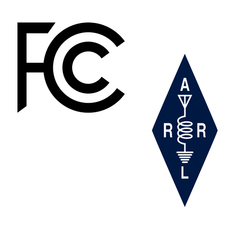 ARRL is treating a petition before the Federal Communications Commission (FCC) to allow data communications on multiple bands within the HF 2 - 25 MHz range with up to 20 KW as a subject of concern for its members and the greater Amateur Radio Service. ARRL Laboratory staff are studying the matter from a technical standpoint, including analysis of transmitted signals potentially interfering with Amateur Radio communications on Amateur Radio spectrum. The results from this expert review are being finalized and will inform ARRL's filed comments on the matter.
ARRL is treating a petition before the Federal Communications Commission (FCC) to allow data communications on multiple bands within the HF 2 - 25 MHz range with up to 20 KW as a subject of concern for its members and the greater Amateur Radio Service. ARRL Laboratory staff are studying the matter from a technical standpoint, including analysis of transmitted signals potentially interfering with Amateur Radio communications on Amateur Radio spectrum. The results from this expert review are being finalized and will inform ARRL's filed comments on the matter.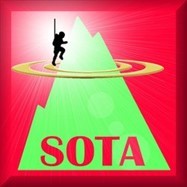 SOTA is an award scheme for radio amateurs that encourages portable operation in mountainous areas. It provides opportunities for summit climbers (known as activators) to scale some of the highest peaks in North America and contact amateur radio stations locally and around the world.
SOTA is an award scheme for radio amateurs that encourages portable operation in mountainous areas. It provides opportunities for summit climbers (known as activators) to scale some of the highest peaks in North America and contact amateur radio stations locally and around the world..jpeg)
.jpg)
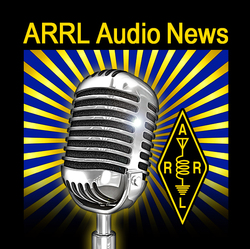 Listen to
Listen to 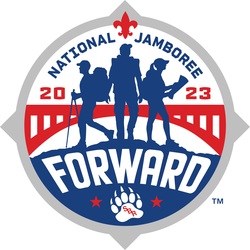 K2BSA will showcase amateur radio at the 2023 National Scout Jamboree at Summit Bechtel Reserve in West Virginia, July 19 - 28. The exhibit will include ham radio demonstrations on HF (40 meters and up), satellite, and VHF/UHF. Listen for the station on D-Star (REF033A), and *JOTA-365* conference node on Echolink. More details at
K2BSA will showcase amateur radio at the 2023 National Scout Jamboree at Summit Bechtel Reserve in West Virginia, July 19 - 28. The exhibit will include ham radio demonstrations on HF (40 meters and up), satellite, and VHF/UHF. Listen for the station on D-Star (REF033A), and *JOTA-365* conference node on Echolink. More details at 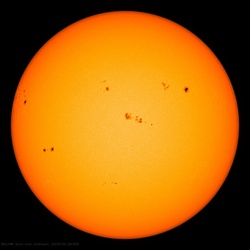
-2023-small.jpg)
-Blue.jpg)








